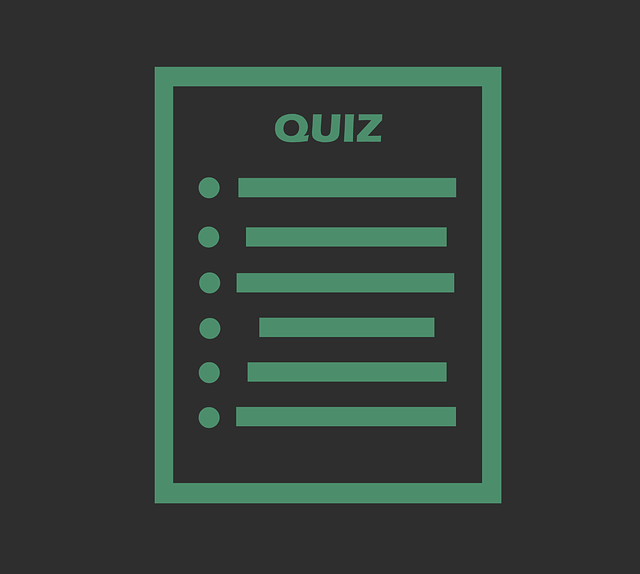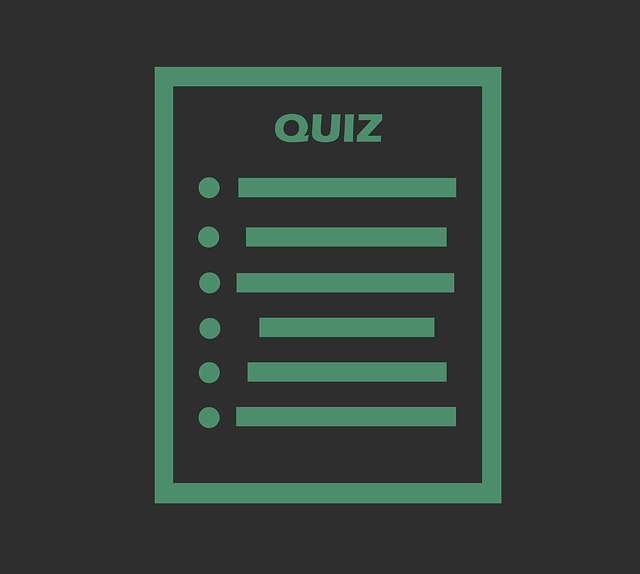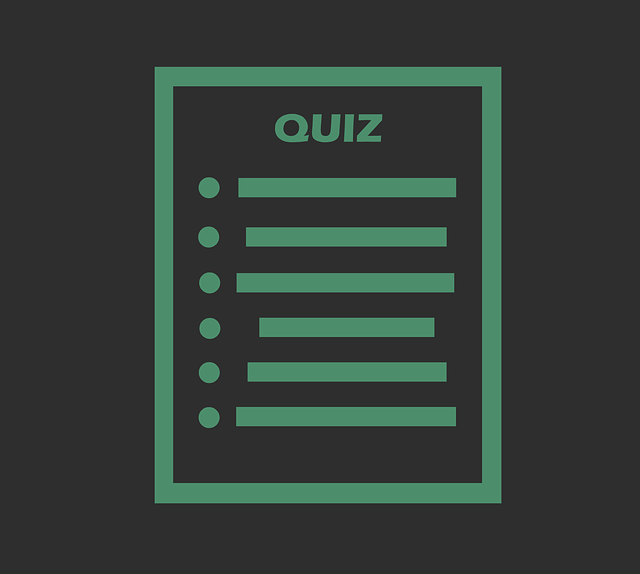In this blog you will find the correct answer of the Coursera quiz Learning How To Learn Coursera week 2 Quiz mixsaver always try to brings best blogs and best coupon codes
Learning How To Learn Coursera week 2 Quiz
1. It’s quite common to get stuck on a problem–often because you have initial ideas about what the solution should be that block your ability to see the real solution. Which of the following are a good next best step to take when you’ve already spent time reanalyzing the problem by focusing intently, and you find that you are simply stuck? (Check all that apply)
- Switch your attention to something completely different, or even better, go for a walk or take a shower–anything that allows your mind to relax and dart randomly around.
- If it is toward the end of the day and you are already tired, go to sleep and try again in the morning.
- Keep working away on the problem–the solution will come as long as you keep your focus on it.
1. It’s quite common to get stuck on a problem–often because you have initial ideas about what the solution should be that block your ability to see the real solution.
Which of the following are a good next best step to take when you’ve already spent time reanalyzing the problem by focusing intently, and you find that you are simply stuck? (Check all that apply)
- Take a little break. You can focus on something different, or even just relax and not focus on anything at all, perhaps going out for a walk.
- Stare intently–it is your focused mode that will provide the big picture perspective you need to solve the problem.
- Mentally rethink the problem yet again from where you started, following each step carefully to look for where you may have gone wrong. If you do this enough times without taking a break, the answer will come to you.
2. Select the true statements regarding the Pomodoro technique.
- During the time you are doing a “Pomodoro,” you want to try to focus as intently as you can on what you are working on.
- The Pomodoro technique involves working as intently as you can for as long as possible – focusing on your work for two, three or more hours at a time. When you’re mentally exhausted, you can take a break.
- To use the Pomodoro technique, you want to ensure that, as much as possible, you remove all distractions and temptations that might bother or distract you during the time you are working.
- Giving yourself a little reward at the end of your “Pomodoro” is an important part of the Pomodoro technique.
2.Select any true statements regarding the Pomodoro technique.
- The Pomodoro technique involves setting a timer and working intently, without interruption, often for a period of 25 minutes.
- Multitasking while doing a Pomodoro—for example, having your cell phone turned on so you can catch critical messages, is okay. The main thing is not to worry about the distractions and to return to work immediately after you might be distracted.
- Immediately after finishing a Pomodoro you should do another Pomodoro, and another, as long as you possibly can with no breaks or rewards. This helps build your mental stamina.
- When you are doing a “Pomodoro,” you want to set out as large a task as possible to be completed. For example, you might decide that you want to finish an entire homework set during your Pomodoro, even though the homework set might ordinarily take half a day or more. By imagining that you will complete a big task, you will do far more than you would ordinarily be able to do.
3. In the __________ mode, the brain makes random connections in a relaxed fashion.
- Diffuse
- Spread out
- Focused
- Weight-lifting
4. Select the following true statements regarding procrastination.
- The Pomodoro technique is an effective way to tackle procrastination
- When you feel neural discomfort about something you don’t want to do, switching your attention to something more pleasant can help you feel better–temporarily.
- Procrastination is a rare problem.
- Procrastination seems to involve an attempt to switch your mental attention away from something that you find slightly painful.
4. Select the following true statements regarding procrastination.
- While you are “doing a Pomodoro” session, it’s all right to take a quick look at other less urgent things such as instant messages or emails.
- After you “do a Pomodoro” session, a reward isn’t very important.
- Everybody has some issues with procrastination.
- When you don’t want to work on something, a sense of neural discomfort arises. However, researchers have found that not long after you might start working on something that you find unpleasant, that neural discomfort disappears. So an important aspect of tackling procrastination is to just get yourself through that initial period of discomfort. The Pomodoro technique helps you do that.
5. One of the first videos described the difference between the focused mode and the diffuse mode. According to this video, the focused mode is affiliated with (check all that apply to the concept of focused mode only):
- A pinball machine that has bumpers which are very tightly grouped together, so the pinball (the thought) can’t go very far without bumping into a bumper.
- Away of drawing upside down in order to focus on the details, as one of the videos discussed in detail.
- Ideas, concepts, and problem-solving techniques that are at least somewhat familiar to you–your previous knowledge lays a sort of underlying neural pathway that you tend to follow.
- A relaxed, daydream-like approach to problem-solving.
5. One of the first videos described the difference between the focused mode and the diffuse mode. According to this video, the focused mode is affiliated with (check all that apply to the concept of focused mode only):
- A direct approach to solving problems that you are rather familiar with.
- The type of intense concentration you need to work through a problem, step-by-step.
- A way of pretending to understand used by Shakespearean actors, as one of the videos discussed in detail.
- A pinball machine that has bumpers which are very far apart, so the pinball (the thought) can go a long ways before bumping into a bumper.
6. Select the following true statements about sleep, according to this module’s videos.
- Too little sleep over too long a time is associated with all sorts of nasty conditions, including headaches, depression, heart disease, diabetes, and just plain dying earlier.
- During sleep, your brain erases the less important parts of memories and simultaneously strengthens areas that you need or want to remember.
- As discussed on the videos, you should get at least twelve hours of sleep in every twenty-four hour period.
- Sleep is designed to allow for snoring, which clears your sinuses but makes you sound like an asthmatic banshee.
- If you go over what you are learning right before you take a nap or going to sleep for the evening, it will NOT increase the chance of you dreaming about it.
6. Select the following true statements about sleep, according to this module’s videos.
- Taking a test without getting enough sleep means you are operating with a brain that’s got metabolic toxins floating around in it—poisons that make it so you can’t think very clearly.
- When you sleep, your brain cells shrink, which allows toxins to be more easily washed away.
- Dreaming about something doesn’t improve your ability to understand it.
- Sleep has been shown to make a remarkable difference in your ability to figure out difficult problems and to understand what you are trying to learn.
- It’s better to go without sleep and cram what you can into your brain–you can usually rely on short-term adrenaline to help propel you through a test.
7. Select the following true statements about memory, in accordance with the information in this module’s videos.
- Working memory is like a large storage warehouse.
- If you do not leave time for the mortar to dry (that is, time for the synaptic connections to form and strengthen), you won’t have a very good memory structure.
- Your working memory is like an inefficient mental blackboard–it can only hold a few things in mind, and those things can easily fall out.
- Research has shown that if you try to glue things into your memory by repeating something twenty times in one evening, for example, it actually sticks better than if you practice it the same number of times over several days.
7. Select the following true statements about memory, in accordance with the information in this module’s videos.
- Research has shown that if you try to glue things into your memory by repeating something twenty times in one evening, for example, it won’t stick nearly as well as if you practice it the same number of times over several days..
- Long term memory is like an inefficient mental blackboard.
- “Intense paleo learning,” where you rub a fossil while trying to learn something new, is an excellent way of lodging something into your memory.
- Long term memory is like a storage warehouse.
- Repetition is needed so your metabolic vampires—natural dissipating processes—don’t suck the memories away.
8. Select the following true statements about practice, according to this module’s videos.
- You should deliberately practice something incorrectly at least once or twice–counterintuitively, this will strengthen your unconscious knowledge base of how to do that “something” correctly.
- Practice is something that should best be done in the evenings, when you’re slightly tired.
- Neurons become linked together through repeated use. The more abstract something is, the more important it is to PRACTICE in order to bring these ideas into reality for you.
- Practice is important for any area in which you want to acquire expertise.
8. Which of the following sentences do you think is the best advice for someone who is struggling to learn abstract concepts, such as mathematical ideas?
- You should practice regularly, as practice strengthens the neural connections you make during the learning process. The concepts you are studying might seem abstract, but strong neural connections are real and concrete.
- You should use the diffuse mode of thinking, as the diffuse mode is the one that processes abstract ideas.
- If you are not “naturally good” at mathematics, you should consider studying something more in line with your natural abilities. People should only do what they are naturally good at.
- You should study very intensively for one day a module, as this is the best way to create strong neural connections. After a very intense session of study you will have already learned that concept, and you won’t need to study it again.
9. Check the activities below that would be more apt to arouse the diffuse (rather than focused) mode:
Dancing in a relaxed and free form manner, without concentrating on anything.
Giving step-by-step directions for how to get to your friend’s apartment, which you’ve been to several times before.
Calculating the tip for your waiter in a restaurant.
Tag along in the passenger seat of a car, looking absently out the window while someone else is driving.
10. Exercise (check all that are true):
- Is unrelated to learning.
- Allows you to disconnect from what you have been concentrating on previously–this can allow your diffuse mode to kick in.
- Helps spark new and creative approaches to problems you are working on.
- Generally inhibits learning and is best done after the major learning activities of the day have been completed.
10. Exercise (check all that are true):
- Is NOT a time for diffuse type thinking.
- Helps improve your ability to learn and remember.
- Has been removed from schools, and it’s a good thing, because it allows more time for learning activities.
- Research is showing that exercise seems to be just as important as an enriched environment in allowing the brain to grow new neurons and remain healthy.
11. Select the statements that explain why math and science might sometimes be more challenging.
- Concepts in math and science are closely related to our emotions.
- Math and science often involve more abstract, rather than concrete, ideas.
- In math and science, it’s sometimes difficult to find analogous real-world concepts to point to—the abstract nature of a “+” symbol, for example, isn’t like the word cow, which involves an animal you can directly point to.
- Math and science generally involve concrete, not abstract, ideas.
- Math is not so directly related to emotions that we can feel.
11. This module’s videos have tried to make some important points about your ability to learn. Which of the following points do you think were among those being made?
- Don’t just blindly follow your passions–also work to broaden your passions by keeping yourself open to learning new things, even if you feel you don’t have a talent for them.
- You cannot change your natural talents–if you’re not good at something, you should avoid it.
- We ordinarily think of learning as something we do when we sit down to study a book. But actually, being able to learn more easily and deeply involves many important facets–including not only periods of focused concentration, but also periods of relaxation, and even times when the body is simply out getting exercise. Your brain can be busy figuring things out during times when you have absolutely no conscious awareness of it.
- Stepping back and learning how to learn can help you maintain a flexibility and openness that can help you in many areas of your life.
12. The __________ mode involves a direct approach to solving problems using rational, sequential, analytical approaches. It is associated with the concentrating abilities of the brain’s prefrontal cortex, located right behind your forehead.
- focused
- diffuse
- Dali
13. Which of the following statements is true about our current scientific understanding of the brain?
- We’re born with a set number of neurons–no new neurons can be born in our brains after infancy.
- As we get older our brains only deteriorate and there’s nothing we can do about it.
- An enriched environment (surrounding ourselves with creative, supportive people) strengthens the synapses in our brains.
- Isolating ourselves and focusing completely on our studies is the only path to success.
13. Which of the following statements is true about our current scientific understanding of the brain?
- Even if we don’t have an enriched environment, our brains will also continue to grow new neurons if we exercise.
- Isolating ourselves and focusing completely on our studies is the only path to success.
- As we get older our brains only deteriorate and there’s nothing we can do about it.
- We’re born with a set number of neurons–no new neurons can be born in our brains after infancy.
13. According to Dr. Sejnowski’s video, what happens in your brain during sleep that helps you remember new experiences?
- Your brain switches off like a lightbulb.
- You dream of electric sheep
- Your brain forms new synapses (connections)
- Your exhaustion motivates your brain to reboot.
14. Select the true statements about the human brain.
- Adult brains can’t form new synapses.
- Brain connectivity is static, not dynamic.
- Sleep makes it easier to learn new things and solve problems.
- Learning changes the structure of the brain.
Important link:





